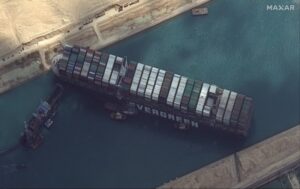Although increasingly common, shipping boats internationally can be tricky, especially for inexperienced shippers. The different sizes, regulations, and required documentation may confuse even the ordinary shipper. Not understanding the process leads to time and monetary loss. For example, giving customs incorrect documents can result in your goods being held up, leading to demurrage charges. Despite this, the international transportation of ships has grown in recent times. Shipments to and from the Mediterranean Sea to the U.S., particularly, have grown in volume. This article will introduce what to expect and how to prepare when starting.
What To Know Beforehand?
Before starting, it is essential to know the guidelines for transporting boats, which differ based on country. Likewise, the shipper must follow various customs regulations when bringing cargo into the U.S. Another important consideration is the boat’s dimensions, which affect the shipping method. The main ways that carriers ship boats and yachts internationally include:
- Containers – Containerized shipping is standard for boats shorter and narrower than eight feet. This is one of the most inexpensive transport methods despite the size limitations.
- Flat Rack – Larger boats typically ship in flat racks, which are open custom cradles that eliminate container size restrictions.
- Roll-on/Roll-Off (RORO) – The most typical way shippers transport boats internationally is by RORO services. Workers roll the ships onto the carrier using trailers and safely secure them.
- Lift-On/Lift-Off (LOLO) – Carriers with onboard cranes or cranes dockside at a port lift the boats onto the carrier.
A shipper should also prepare the boat for international shipping beforehand. Preparation can include securing delicate areas, removing or protecting detachable parts, and removing components. The yacht must also comply with safety standards. Fuel and water tanks can also require a complete or partial drain. Another consideration is having insurance protection on the shipment. Shipping companies and freight forwarders usually have insurance options available for transporting boats.
What Is The Process for Shipping Boats Internationally?
Once the shipper is ready to transport the boat, they contact a shipping company or freight forwarder. Freight forwarders act as the middleman between the shipper and carrier while handling different parts of the transportation process. During the journey, they give updates on the status of the shipment. The documentation must be ready before the boat enters the country of import. Customs brokers coordinate with customs on the release of your shipment. They do this by completing the paperwork, ensuring government compliance, calculating duties, classifying goods, etc. When customs releases the boat, importers typically use a flatbed truck to transport it to the final destination.
How Can You Get Started?
The reason why shipping boats can be complicated is because of the various rules and regulations involved. Shipments like yachts are valuable investments, and a misinformed decision can lead to significant losses. Shippers typically use the assistance of a 3PL (third-party logistics) company to begin. 3PLs are service providers that handle various parts of a supply chain. Some solutions include cargo transport, distribution, customs clearance, and more. Call A1 Worldwide Logistics at 305-821-8995 or email info@a1wwl.com regarding shipping your boat to and from the U.S. We have freight forwarding and customs brokerage services to clear your shipment once it reaches the U.S.





